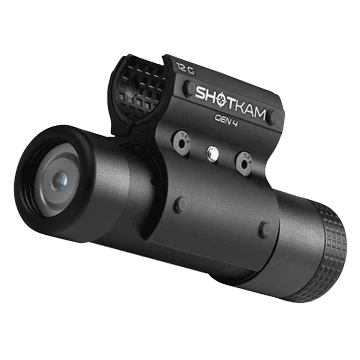Master Sporting Clays: Advanced Tips for Crossers in Canada
Crossers are a staple of sporting clays courses and often leave even seasoned shooters scratching their heads. These challenging targets require precise timing, controlled movements, and an adaptable approach. In this episode of Master Sporting Clays, Jonny Carter of TGS Outdoors partners with renowned coach Josh Brown to break down the secrets to mastering crossers. Watch Episode 3 below and click the 'CC' button for captions in multiple languages.
Understanding Crossers
Crossers mimic the flight path of birds moving laterally, which tests a shooter’s ability to judge speed, angle, and distance. Josh explains that while there are multiple ways to approach crossers, the key is to find a technique that suits your natural rhythm. Popular methods include swing-through, pull-away, and maintained lead, but Josh prefers the swing-through method. This approach involves positioning the gun just behind the target and letting the bird pull ahead, which helps control timing and maintain consistency.

The Approach: Gun Position and Timing
A consistent gun position and timing are crucial when tackling crossers. Josh emphasizes that starting slightly behind the target allows the shooter to match its speed more naturally. He advises against rushing to the kill point, which can lead to forced movements and missed shots.
Pro Tip: Position the gun slightly behind the bird and let the target dictate your movement. This controlled method helps align the shot without rushing.

The Role of Footwork and Body Alignment
Proper footwork and body alignment are often overlooked but play a critical role in mastering crossers. For right-handed shooters, aligning the left foot with the kill point and opening the shoulders can make transitions smoother. Josh recommends rotating from the core rather than overusing the shoulders to maintain balance and control throughout the shot.
Pro Tip: Align your lead foot with the kill point and keep your shoulders relaxed to achieve a fluid swing.
Using ShotKam for Real-Time Feedback
One of the biggest challenges with crossers is understanding why a shot went astray. Without clear feedback, it can be hard to pinpoint mistakes in timing or positioning. Jonny and Josh demonstrate how ShotKam helps shooters analyze their shots in detail. By reviewing the footage, they identify subtle misalignments or rushed movements that impact accuracy.
Pro Tip: Use ShotKam to evaluate your hold points and timing. Reviewing your footage can reveal patterns in your shooting technique that need adjustment.

Timing Techniques: Swing-Through vs. Maintained Lead (Sustained Lead)
Jonny experiments with swing-through and maintained lead techniques under Josh’s guidance. Swing-through relies on instinctive timing but can feel rushed, while maintained lead offers stability but requires precision to avoid slowing down the gun. This comparison highlights the importance of timing in achieving the ideal gap between the barrel and the target.
Pro Tip: Stick with one technique during practice to build muscle memory and consistency. Over time, this repetition will make your movements more natural.
Adjusting for Distance: Long-Range Crossers
Shooting crossers at longer distances introduces additional challenges, such as maintaining control over gun speed and timing. Josh explains that regardless of range, the fundamentals of swing-through or maintained lead should remain consistent. Moving 20 yards back is a good test of how well a shooter can adapt their technique.
Pro Tip: Focus on keeping your movement smooth and deliberate, even when the target is farther away.

Conclusion: Consistency is Key
Crossers test a shooter’s ability to combine timing, positioning, and focus. As demonstrated by Jonny and Josh, the fundamentals—like aligning your body, choosing the right gun position, and maintaining consistent timing—are the foundation for success. By refining these elements and using tools like ShotKam for real-time feedback, you can improve your accuracy and approach any crossing target with confidence.
Ready to elevate your game? Practice these tips, review your footage, and see how small adjustments can lead to big improvements.
Missed Episode 2? Check out our blog on mastering driven targets.
You are reading:











